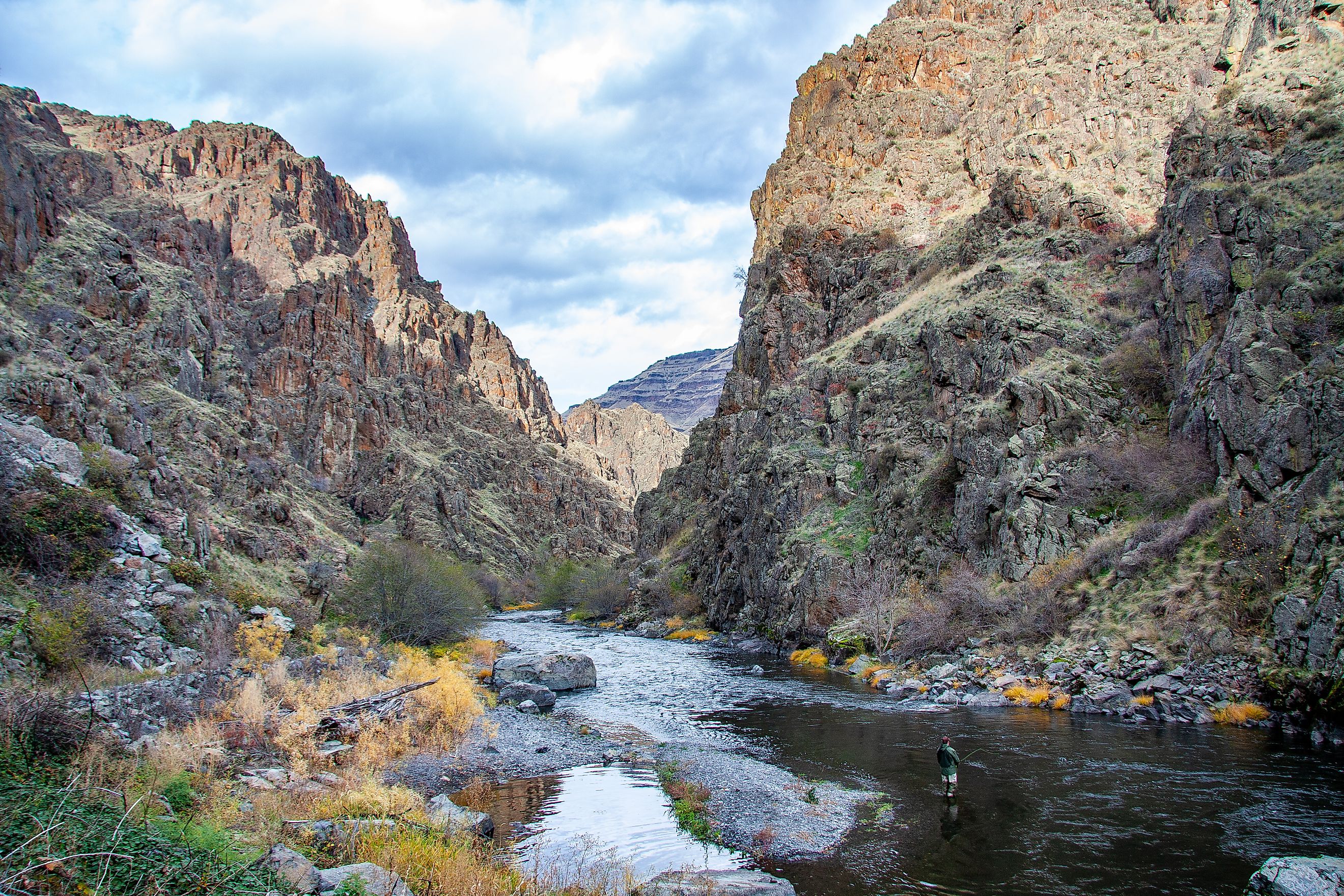
The 7 Deepest Canyons in the US
Across the vast and varied landscapes of the United States, canyons stand as some of the most awe-inspiring natural wonders. Carved over millions of years by relentless rivers and geological upheaval, these deep chasms are more than just scenic marvels—they are powerful reminders of Earth’s raw, untamed power. While the Grand Canyon often steals the spotlight, several lesser-known gorges plunge even deeper into the earth. From volcanic terrain in the Pacific Northwest to remote desert slots in the Southwest, dive into the seven deepest canyons in the US, ranked by depth and enriched with fascinating history, geology, and natural beauty.
Hells Canyon, Oregon-Idaho Border
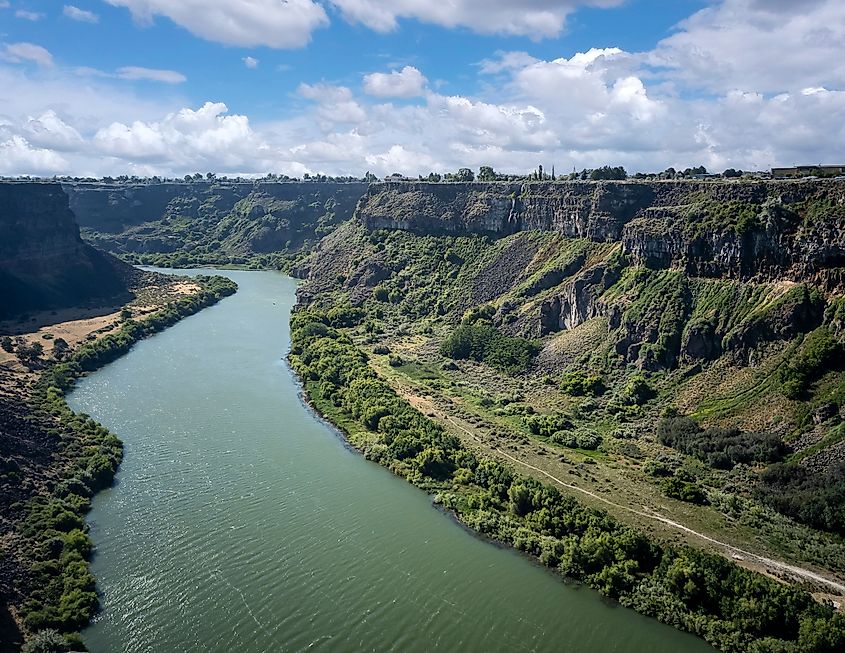
Depth: 7,993 feet
Straddling the rugged border of northeastern Oregon and western Idaho, Hells Canyon is the undisputed deepest canyon in North America. Carved by the Snake River over the course of 6 million years, this vast gorge plunges nearly 8,000 feet from its rim to river—a depth that surpasses even the Grand Canyon.
Unlike the stark red rocks of Arizona, Hells Canyon is draped in forested slopes, high alpine ridges, and exposed layers of volcanic basalt. Much of the area remains wild and largely inaccessible, with the Hells Canyon Wilderness protecting its most remote regions. The Nez Perce and other Indigenous peoples once called this land home, and traces of their ancient rock art and pit houses still remain.
Highlights of Hells Canyon:
-
Remote wilderness hiking on the Seven Devils Mountains
-
Scenic rafting and jet boating on the Snake River
-
Archaeological sites with Native American rock art
-
Diverse ecosystems ranging from river valleys to alpine tundra
Kings Canyon, California

Depth: 8,200 feet (from summit to riverbed)
Nestled within the Sierra Nevada range in central California, Kings Canyon may not be as famous as its southern cousin, Yosemite, but it arguably offers even more dramatic vertical relief. When measured from the summit of Spanish Peak to the canyon floor along the Kings River, Kings Canyon reaches an astonishing depth of 8,200 feet—technically even deeper than Hells Canyon when including the surrounding mountain heights.
The canyon was shaped by glacial and river erosion, creating steep granite cliffs, roaring waterfalls, and deep glacial valleys. It lies partially within Kings Canyon National Park, adjacent to Sequoia National Park, offering visitors unparalleled access to some of the tallest trees and most striking scenery in the country.
Don’t miss:
-
The roaring Kings River, one of the steepest in the US
-
Zumwalt Meadow, a serene hike through lush landscapes
-
Panoramic views from the park’s many high-altitude trails
-
Access to the John Muir Trail and Pacific Crest Trail
Grand Canyon, Arizona
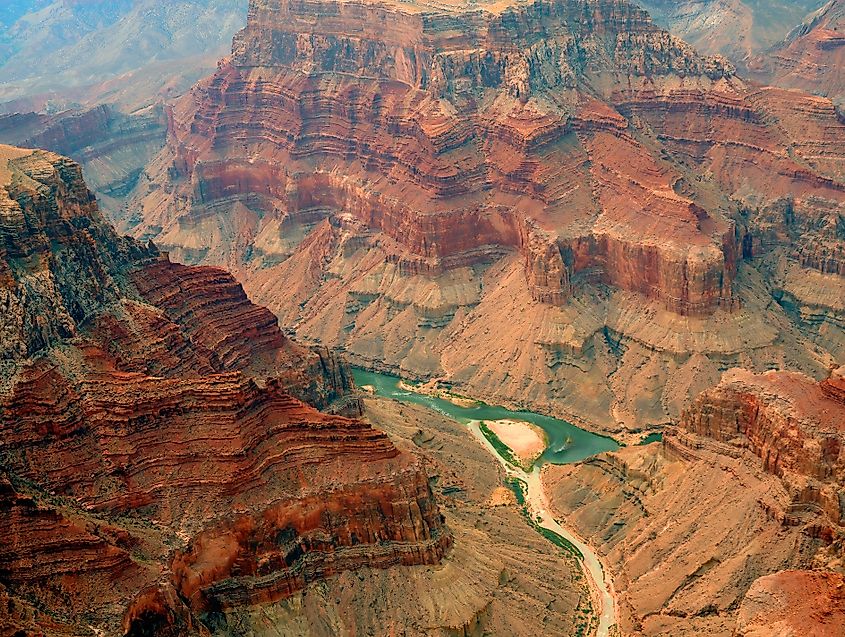
Depth: 6,093 feet
While not the deepest, the Grand Canyon is certainly the most iconic. At its deepest point—near the confluence of the Colorado River and the North Rim—the canyon drops a staggering 6,093 feet. It stretches 277 miles long and up to 18 miles wide, revealing nearly 2 billion years of Earth’s geologic history in its exposed rock layers.
Designated a UNESCO World Heritage Site in 1979, Grand Canyon National Park is both a geological marvel and a cultural touchstone. Indigenous tribes including the Havasupai, Hopi, and Navajo have long inhabited the region, and many still hold deep spiritual connections to the land.
Must-see spots in the Grand Canyon:
-
Bright Angel Trail: A classic hike into the canyon’s depths
-
Desert View Watchtower: A 70-foot stone tower with sweeping views
-
Colorado River rafting trips, ranging from one day to two weeks
-
Grand Canyon Skywalk: A glass bridge extending over a 4,000-foot drop
Black Canyon of the Gunnison, Colorado
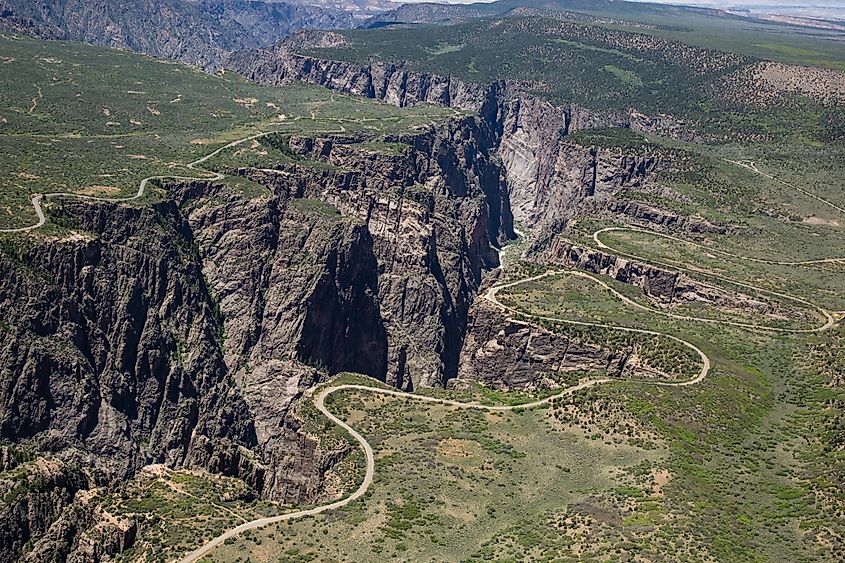
Depth: 2,722 feet
One of the steepest and most dramatic canyons in the US, the Black Canyon of the Gunnison plunges 2,722 feet at its deepest point near Warner Point. The canyon earns its name from its extreme narrowness and dark, shadow-filled walls that allow only a few minutes of sunlight per day in certain places.
Carved over 2 million years by the Gunnison River, the canyon’s vertical cliffs and dramatic spires of Precambrian rock create a foreboding beauty. This is a canyon for the rugged at heart—while scenic overlooks abound, descending to the river requires strenuous, off-trail navigation through dangerous terrain.
Top features of Black Canyon:
-
Painted Wall, the highest cliff in Colorado at 2,250 feet
-
Rock climbing on sheer vertical faces
-
North and South Rim scenic drives with dramatic overlooks
-
Limited access inner-canyon hiking for skilled adventurers only
Zion Canyon, Utah
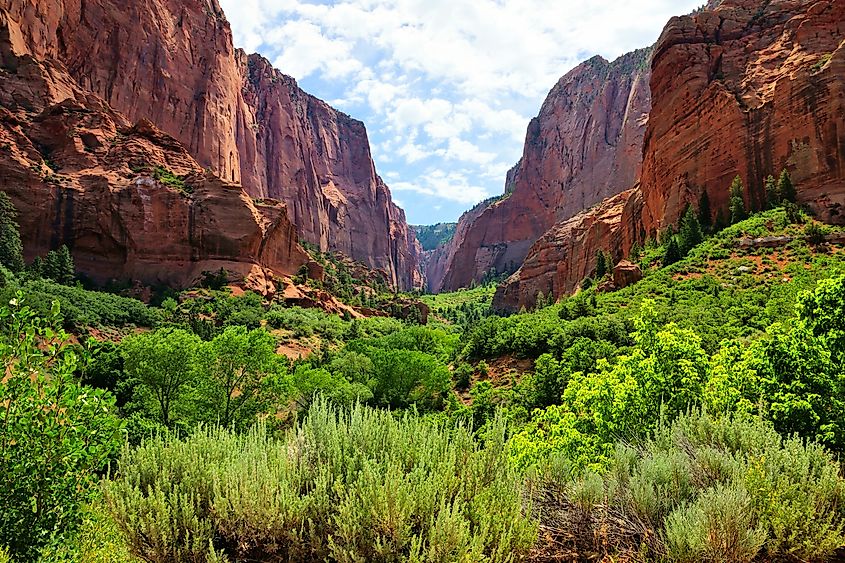
Depth: ~2,640 feet
Though Zion National Park is known for its soaring sandstone walls and vibrant red cliffs, Zion Canyon itself reaches depths of over 2,600 feet in places, particularly around Angel’s Landing and Observation Point. The Virgin River carved this lush canyon over millions of years, creating a corridor of hanging gardens, slot canyons, and desert oases.
What makes Zion unique among the canyons on this list is its accessibility—visitors can walk directly along the canyon floor via the Zion Canyon Scenic Drive or hike to breathtaking heights on world-renowned trails.
Zion Canyon highlights:
-
The Narrows: A hike through the river itself, between towering walls
-
Angel’s Landing: A thrilling hike with vertigo-inducing drop-offs
-
Observation Point: One of the park’s highest viewpoints
-
Zion Canyon Shuttle: An eco-friendly way to tour the landscape
Palo Duro Canyon, Texas
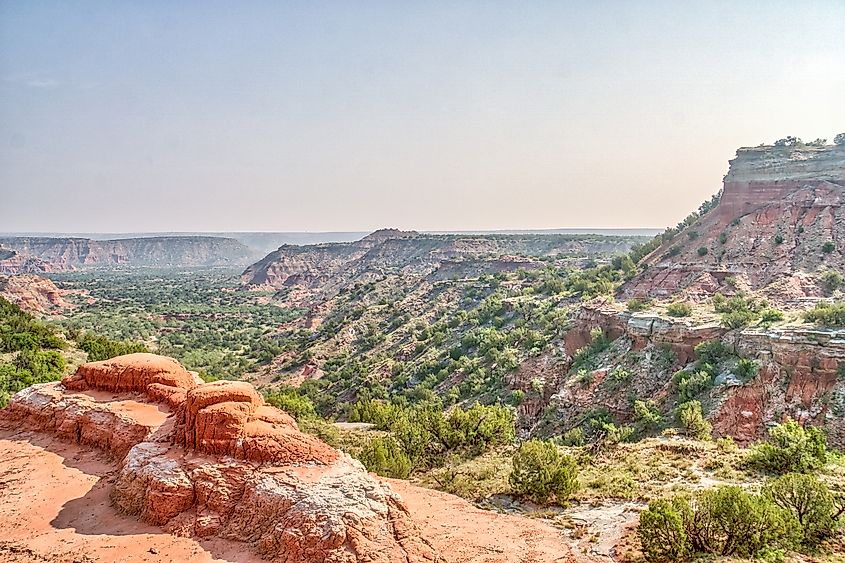
Depth: 820 feet
While not as deep as some other entries, Palo Duro Canyon earns its spot for being the second-largest canyon in the US by length and width—only the Grand Canyon is bigger. It stretches for about 120 miles and reaches a depth of 820 feet, offering vibrant red rock formations and steep cliffs sculpted by the Prairie Dog Town Fork of the Red River.
Located in the Texas Panhandle near Amarillo, Palo Duro was once inhabited by the Apache, Comanche, and Kiowa tribes and was the site of the Red River War, a pivotal conflict during the late 1800s between the US military and Native tribes.
Why visit Palo Duro:
-
Colorful geological layers and hoodoo formations
-
Summer performances of “Texas,” an outdoor musical set in the canyon
-
Scenic drives and mountain biking trails
-
RV camping and glamping options with canyon views
Waimea Canyon, Hawaii

Depth: ~3,600 feet
Known as the “Grand Canyon of the Pacific,” Waimea Canyon on the island of Kauai offers a striking tropical twist on the canyon landscape. Formed by a combination of volcanic collapse and erosion from the Waimea River, this vibrant chasm is about 10 miles long and plunges up to 3,600 feet deep.
Waimea Canyon’s multicolored cliffs—ranging from deep reds to lush greens—are constantly shrouded in mist and rainbows due to the island’s moist climate. It offers a stark contrast to the desert canyons of the mainland and is a centerpiece of Waimea Canyon State Park.
Top reasons to explore Waimea Canyon:
-
Panoramic views from the Waimea Canyon Lookout
-
Hiking the Canyon Trail to Waipoo Falls
-
Dramatic cliffs and lush valleys with ocean vistas
-
Birdwatching and endemic Hawaiian flora
Quick Canyon Facts at a Glance
| Canyon | Depth | State(s) | Notable Features |
|---|---|---|---|
|
Hells Canyon |
7,993 ft |
Oregon/Idaho |
Deepest in North America, Snake River |
|
Kings Canyon |
8,200 ft (peak to river) |
California |
Sierra Nevada granite cliffs |
|
Grand Canyon |
6,093 ft |
Arizona |
UNESCO site, Colorado River |
|
Black Canyon |
2,722 ft |
Colorado |
Narrow, shadow-filled cliffs |
|
Zion Canyon |
~2,640 ft |
Utah |
Angel’s Landing, The Narrows |
|
Waimea Canyon |
~3,600 ft |
Hawaii (Kauai) |
Lush tropical colors |
|
Palo Duro Canyon |
820 ft |
Texas |
Second-largest by length/width |
Q&A: What People Ask About the Deepest Canyons in the US
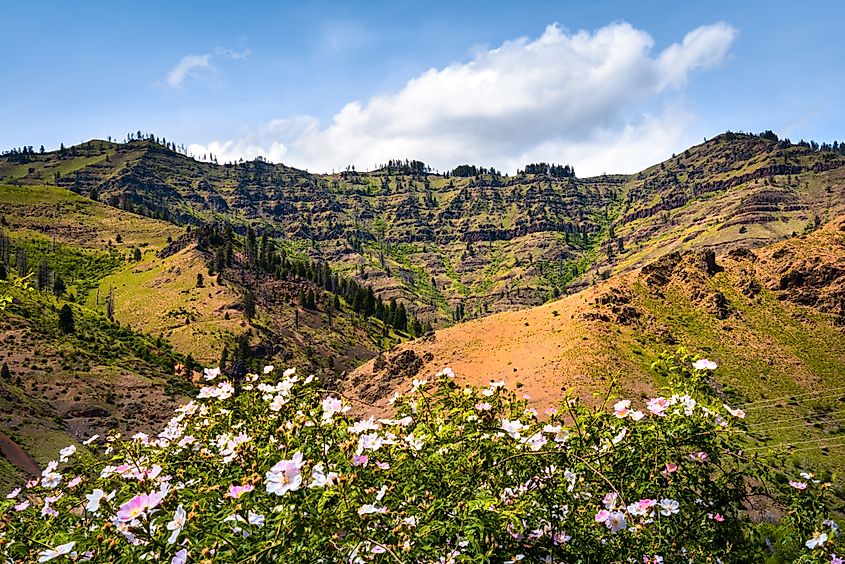
What is the deepest canyon in the US?
Hells Canyon is the deepest canyon in the United States, plunging nearly 8,000 feet from its rim to the Snake River below.
Is the Grand Canyon the deepest in the world?
No. While the Grand Canyon is vast and iconic, it is not the deepest. Canyons like Hells Canyon and Kings Canyon (measured from peak to base) are deeper.
Which canyon is deeper: Hells Canyon or Kings Canyon?
Technically, Kings Canyon is deeper when measured from mountain peak to river, but Hells Canyon has the deepest vertical relief from rim to river.
Are these canyons safe to hike?
Most canyons have safe, marked trails, but some—like the Black Canyon or Wild sections of Hells Canyon—are recommended only for experienced hikers and climbers.
What canyon should I visit for easy access?
Zion Canyon is among the most accessible, with shuttle buses, paved trails, and a wide range of hikes for all skill levels.
Which canyon is the most remote?
Hells Canyon is the most remote and wild, with limited road access and vast wilderness areas best explored by rafting or multi-day hikes.
Can you raft through these canyons?
Yes! Popular rafting spots include the Snake River (Hells Canyon), Colorado River (Grand Canyon), and Kings River (Kings Canyon) during high-flow months.
Do Native American tribes still inhabit these areas?
Yes. Many Indigenous tribes retain strong cultural and spiritual connections to these canyons. In some cases, such as Grand Canyon’s Havasupai people, they still live in the region.
Exploring America's Deepest Canyons
From the volcanic cliffs of Kauai to the icy depths of Colorado’s granite gorges, the United States is home to some of the most dramatic canyons on Earth. Each one tells a different story—of geologic time, cultural heritage, and natural beauty. Whether you're peering into the dizzying depths of Hells Canyon or hiking the vibrant trails of Zion, these colossal chasms invite travelers to step closer to the edge—and closer to the incredible forces that shaped this land.